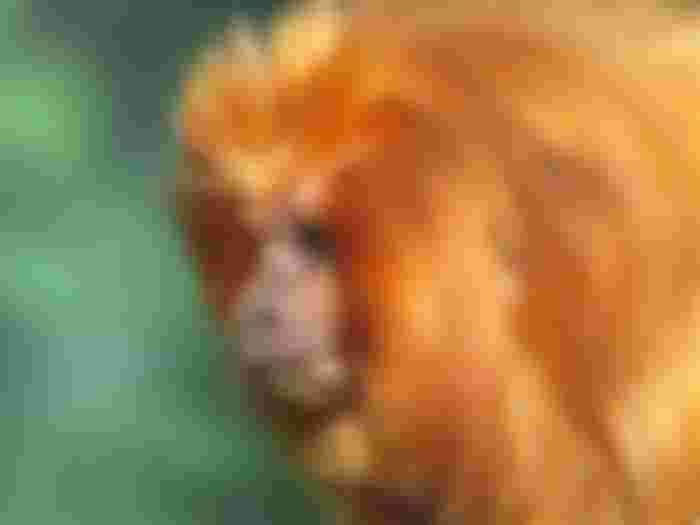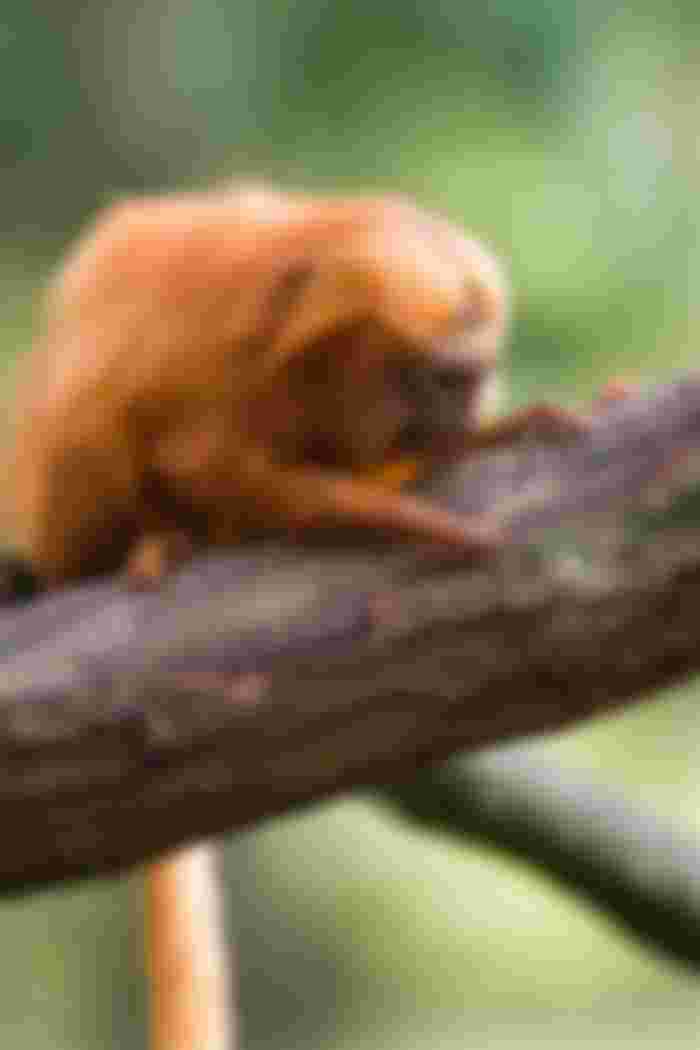Half a century of scientists' efforts to preserve a rare species of monkey that lives only in the forests of Brazil can be ruined by a pandemic.
The spread of kovid-19 in Brazil threatens to destroy the labor and effort that lasted for more than half a century, in order to preserve the bright orange monkeys - golden lion tamarins.

The number of lion mane monkeys living only in Brazil, during the 1970s, due to their capture for trade, as well as the destruction of parts of the Atlantic Forest, their habitat, dropped to 200 units. In the following decades, efforts were made to increase the number of this rare species - from genetic research to captive breeding, and then relocation to habitats where they are least numerous. By 2014, their number had increased to about 3,700.

The first blow, before the pandemic of the new corona virus, happened in 2017, when about 30 percent of the renewed number of monkeys were killed by yellow fever. In 2020, the vaccination of lion tamarins against yellow fever, which has been underway for years, was postponed due to a pandemic.
It is a big surprise for experts who study golden lion tamarins when tamarins died of yellow fever in the 1970s. Other species of monkeys were known to be susceptible to this disease, but not tamarins.
In mid-2017, the number of golden lion tamarins began to decline.

Primatologists from the State University of Northern Rio de Janeiro have just completed a routine study of the baby monkey population. Brazil was in the middle of its worst wave of yellow fever in the last 80 years, which engulfed the southeast of the country, killing more than 250 people and several thousand monkeys in the Atlantic Forest.
When they could not find any golden lion tamarins in the Poco das Antas biological reserve, the main study area since 1985, they became concerned.
Soon, the local population began calling on researchers to lay sick tamarins on the ground, which cannot climb trees, and thus die.
It is really rare to find dead golden lion tamarins lying on pasture. Monkeys tend to stay in the forest, crossing pastures only briefly from one piece of forest to another, and if they happen to die, their corpses quickly disappear due to predators and the high humidity in which they live.
In May 2018, scientists officially confirmed the first death of the golden lion tamarin from yellow fever. A study done the following year showed how terrible the situation was; the outbreak of yellow fever caused a population decline of almost a third. Today, only 2,516 of these monkeys remain.

At the Poco das Antas biological reserve in Rio de Janeiro, researchers found 30 live lion tamarins, but the population in this reserve dropped by 70 percent.
The Golden Lion Tamarin Association and another, American organization, "Let's Save the Golden Lion Tamarin", decided that the vaccine is the best chance to save the species. In many cases, vaccination of the entire primate population would be impossible, but these tamarins live in a small area and researchers monitor them regularly and carefully, so it seemed feasible. To be successful, vaccination must be carried out very precisely, in a limited area.
After the first round of vaccination - a vaccine that is a diluted version of the one given to humans - golden lion tamarins in captivity, they are believed to be safe. The next hurdle was vaccinating monkeys in the forest. As this was the first time that such a request was sent to the Government, there was no clear procedure for approval.
Just when the primatologists were waiting for the last permit before going to the field to vaccinate five groups of monkeys, the covid-19 pandemic began.

Vaccination of monkeys during a pandemic
"Stuck" at home, they could not go to the field and continue working. They lost seven months. They were very frustrated by the bureaucracy. Once a week, we made calls to try to accomplish something, to speed up the process before they lost the remaining tamarins.
In the end, persistence paid off. With permission in hand, they should go out on the field in September. Once the first group is vaccinated, they will be observed for the next six months to a year, before the second round of vaccination.
An additional challenge is to protect researchers from getting and spreading the new corona virus. Two teams will go to the forest, which will require two vehicles, which will increase costs, but also extend the time to do the job. Only three people will be able to be in the laboratory at the same time, and everyone will wear masks all the time, although there is no evidence that tamarins can transmit coronaviruses to humans.
If all goes well, 500 individuals of golden lion tamarin will be vaccinated, which is the minimum number to keep the population in the wild.





South America is known for the diversity of plant and animal species. There are several species of tamarins, these cute little monkeys.